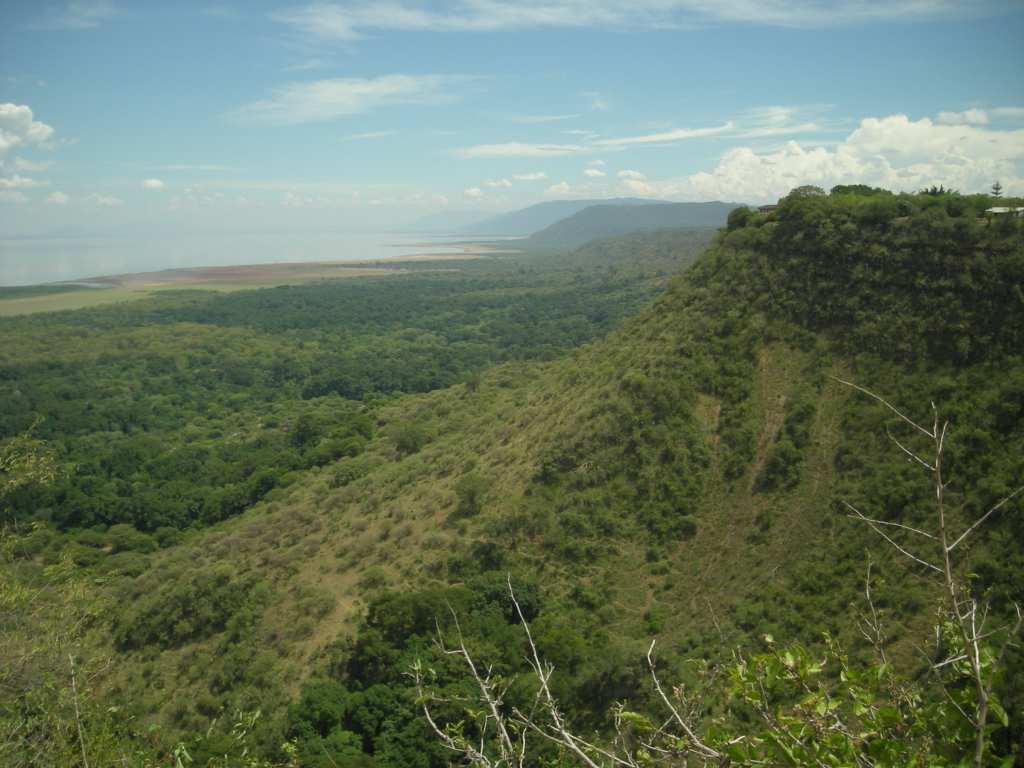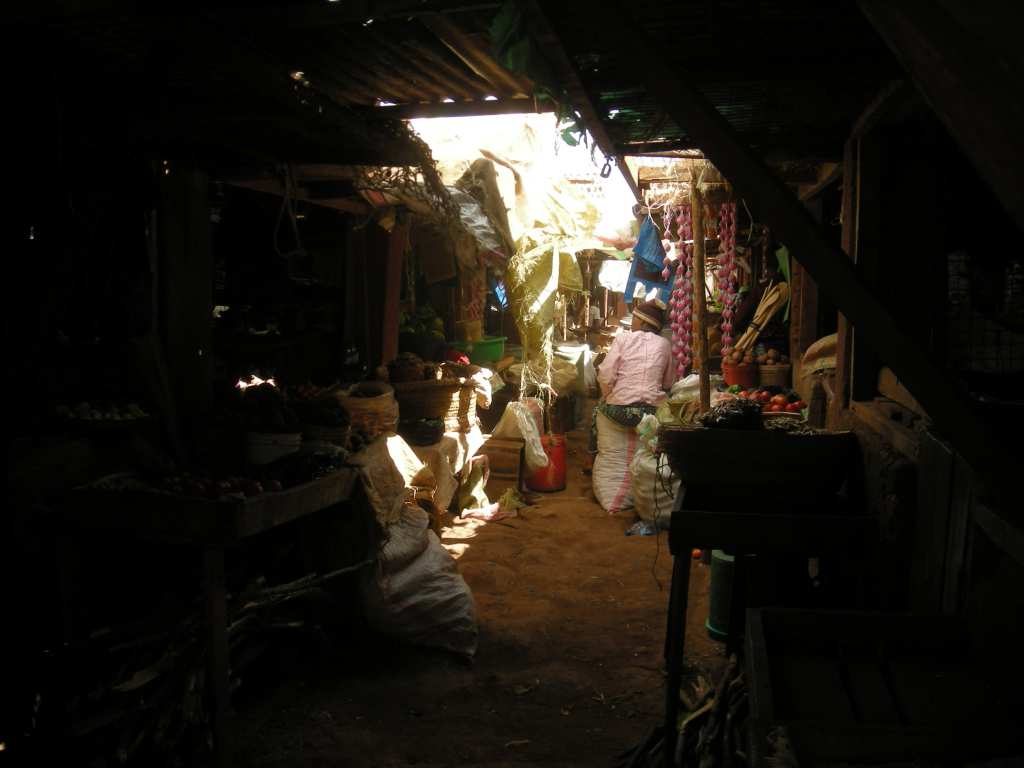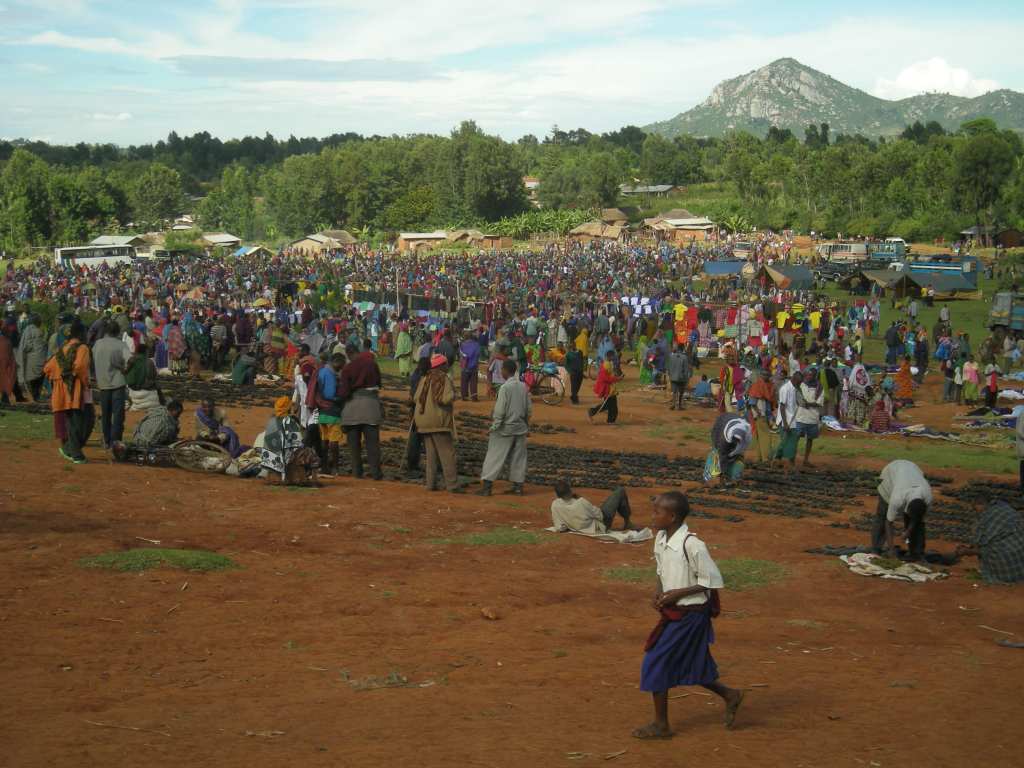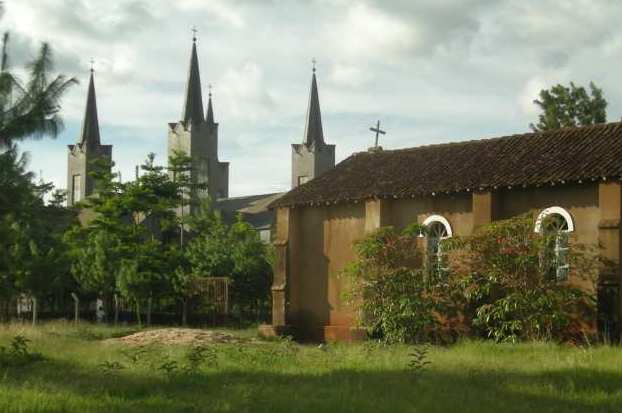We leave Lushoto by bus. The driver just seems to have his driving lessons with real victims on the bus. Two locals instruct him where to accelerate and where to brake on the small winding road down from the Usambara mountains. It gets better on the flat and straight paved main road to Arusha. Scenery changes a lot on the way, from green rice paddies, corn fields to vast dry steep with a few cow flocks and mud houses. At some point, we can see the white peak of Mnt. Kilimajaro above the clouds ahead of the bus. Stunning... The closer we get to Arusha, the greener the land appears. Vivid forests, banana plantations and more sophisticated houses indicate a kind of prosperity. Mnt. Meru, the second highest mountain in Tanzania attracts the clouds and supplies its surroundings with enough rain water. We check in to the Mc Ellis Hotel, 45 USD for a very comfortable single room are okay for us tonight. After diner, we meet Ethel and the driver from Mbulu who brought the jeep. By tomorrow, we’ll be driving in our own Landcruiser!


After shopping in the sort of expensive but well equipped supermarket for Mzungu in Arusha (everyone needs cheese and chocolate after living in rural Tanzania for a couple of weeks) we take off, heading on the still paved road towards Karatu. On the way, we already see some giraffes very close to the road, and hundreds of migratory birds gathering for their saisonal run towards Europe. Next we reach a beautiful viewpoint from where we can observe the escarpment and Lake Manyara and its surrounding National Park underneath. The escarpment is a massive break in the tectonic plate, some hundred meters high and as long as the eye can see.
A quick visit to the market in Karatu, a small town on the way to the famous Ngorogoro crater, then we leave the paved road towards Mbulu. No road signs indicate the possibility of a couple of villages on the dust road, which soon turns into a chain of deep holes and rain-washed grooves on red soil. On the way, we pass by corn fields, sunflower fields and pastures with cow flocks observed by little boys with the obligatory stick in their hands. We can also view to the distant Ngorogoro crater in the West, while we are jumping up and down in the car. I am still wondering how the Daladalas, the small Japanese-made mini-vans that are used as well-packed taxis all over the country, can travel on these road. Reaching Silvio’s and Ethel’s house in the outskirts of Mbulu, we are welcomed by their cook Maria and the Pascal, the gardener, and their dogs and cats.


Mbulu is, like Lushoto and Tanga a town with a history in German colonial times. It used to be called “Neu Trier” back in the 19th century. Nowadays, Germans have erected a big church here, whose 4 towers surrounded by corn fields and clay houses give an impression how Europe must have been looking like 2 or 300 years ago. I’m not a hundred percent convinced about the usability of some development aid gifts. Mbulu is a small town whose shops are gathered around the main junction of two 500 meter long paved roads, surrounded by hills. Due to the recent rain falls, everything looks green and fresh. Usually, the houses are surrounded by cornfields, banana and acacia trees.